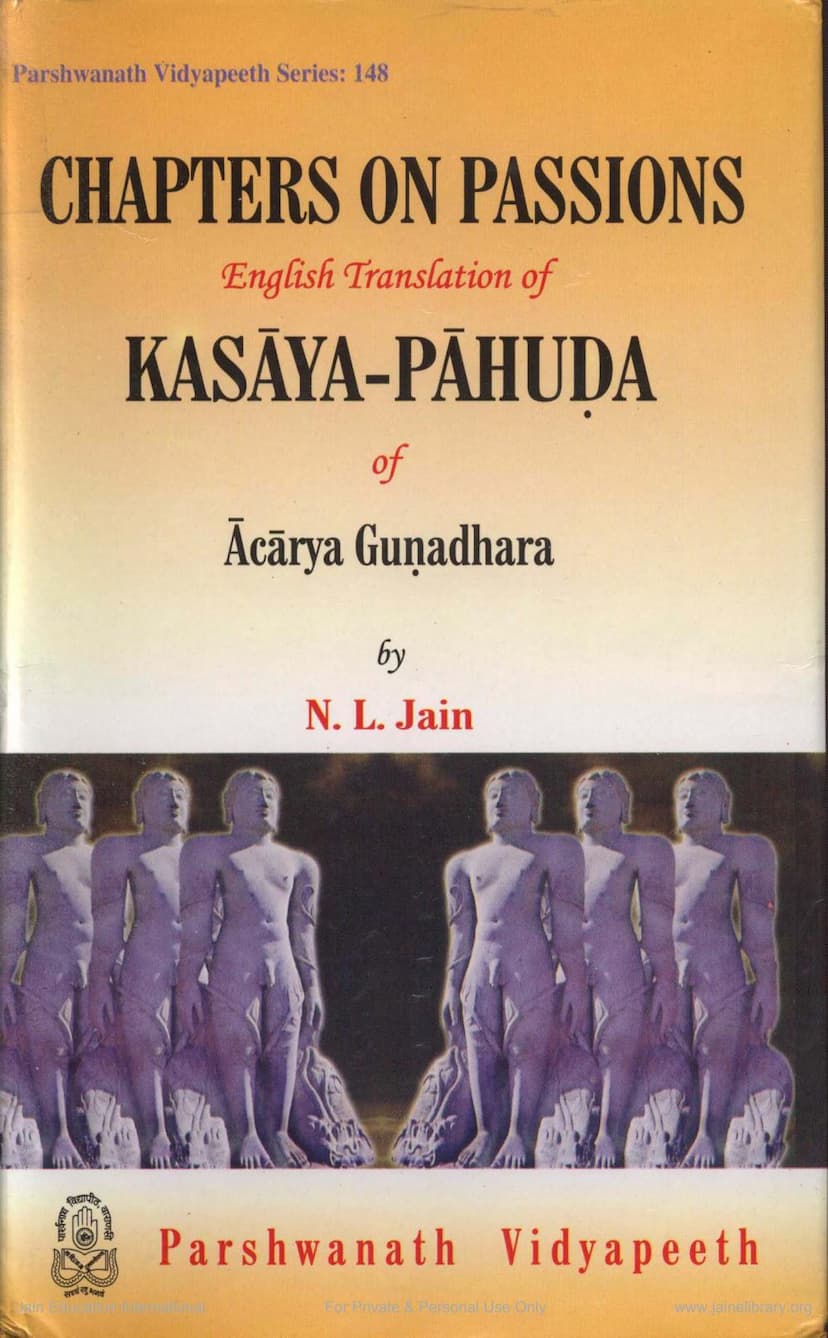Chapter On Passion
Added to library: September 1, 2025

Summary
"Chapters on Passions" (Kasāya-pāhuda) is an English translation by N. L. Jain of the ancient Digambara Jain text Kasāya-pāhuda by Acarya Gunadhara. The book, published by Parshwanath Vidyapeeth, is an extensive exploration of Jain Karma theory, focusing specifically on Mohanīya Karma (deluding karma) and the four types of passions (kasāyas) that bind the soul.
The text delves into the intricacies of these passions, detailing their 16 sub-classes, synonyms, various forms of bondage, transition, maturation, and the methods for their subsidence and destruction. It explains how these passions attract karmic particles, polluting the soul and leading to a cycle of rebirth. The book outlines processes such as transition, attenuation, augmentation, intensity reduction, subsidence, and destruction as means to liberate oneself from karmic bondage.
The translation provides a verse-by-verse rendering of the original text, accompanied by detailed notes and scholarly explanations, particularly drawing from the Jayadhavalā commentary. The introduction offers a comprehensive overview of Jain scriptures, the historical context of Kasāya-pāhuda, its author Acarya Gunadhara, and the nuances of the Prakrit language used. It also compares Kasāya-pāhuda with other foundational Jain texts like Ṣaṭkhandāgama.
The content is structured into 15 chapters, each addressing specific aspects of passions and karma, including:
- Origin and Contents: Tracing the text's lineage and its central themes.
- Karmic Durations and Intensities: Discussing the temporal and intensity aspects of karmic bonds.
- Bonding and Transition: Explaining how karmic particles attach to the soul and how they transform.
- Various Processes: Detailing attenuation, augmentation, intensity reduction, subsidence, and destruction of karmas.
- Specific Passions: Analyzing the nature and effects of anger, pride, deceit, and greed.
- Destruction of Conduct-Deluding Karma: Providing an in-depth explanation of the stages and processes involved in eradicating these specific karmas.
The book includes extensive appendices, a glossary, and reading references, making it a valuable resource for scholars and readers interested in Jain philosophy, particularly its profound insights into the mechanisms of karma and the path to spiritual liberation. The translation aims to make this essential Digambara text accessible to a wider, English-speaking audience.